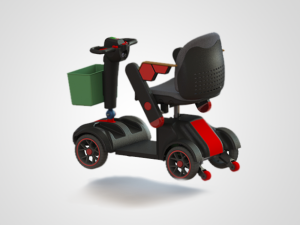Introduction
Electric powertrains represent a revolutionary step in the evolution of Comproducts, offering significant improvements in performance and sustainability. This article delves into the ways electric powertrains can transform Comproducts, focusing on specific metrics such as power, cost, efficiency, size, and lifespan.
Advantages of Electric Powertrains in Comproducts
Improved Efficiency
Electric powertrains excel in converting energy into motion, demonstrating higher efficiency levels compared to traditional engines. For Comproducts, this translates to better performance with lower energy consumption. For instance, electric motors can achieve efficiency rates of up to 90%, a stark contrast to the 20-30% efficiency of conventional combustion engines.
Cost-Effectiveness
While the initial investment in electric powertrain technology might be higher, the long-term savings are substantial. Electric motors require less maintenance due to fewer moving parts and lower wear and tear. Additionally, the cost of electricity to power these motors is often significantly lower than the cost of fossil fuels.
Enhanced Power and Speed
Electric powertrains provide superior torque and power at lower speeds, essential for Comproducts that demand quick acceleration and robust performance. Electric motors can deliver maximum torque instantly, unlike gasoline engines that need to rev up.
Reduced Environmental Impact
Electric powertrains contribute to sustainability by reducing carbon emissions and reliance on fossil fuels. This aspect is particularly critical in the context of global efforts to combat climate change and reduce environmental footprints.
Key Specifications and Metrics
Power Output
Electric powertrains in Comproducts can vary widely in power output, with some models offering over 200 kW of power. This high power output ensures that even heavy-duty Comproducts can operate efficiently.
Size and Weight
Electric motors are compact and lighter than traditional engines, offering flexibility in design and improving the overall weight distribution in Comproducts. This reduction in size and weight enhances the agility and performance of the products.
Lifespan and Durability
Electric powertrains generally have a longer lifespan than combustion engines. They are designed to last for hundreds of thousands of miles with minimal maintenance, making them a reliable choice for long-term use in Comproducts.
Cost and Budget Considerations
The cost of integrating electric powertrains into Comproducts varies based on power requirements and specifications. However, the overall reduction in operational and maintenance costs makes them a cost-effective solution in the long run.

Conclusion
Electric powertrains offer a host of benefits for Comproducts, including improved efficiency, power, and sustainability. By embracing this technology, manufacturers can not only enhance the performance of their products but also contribute positively to environmental conservation. For more information on the application of electric powertrains in Comproducts, visit Comproducts Application.
This comprehensive overview highlights the transformative impact of electric powertrains on Comproducts, underscoring their role in advancing both performance and ecological responsibility.
